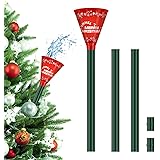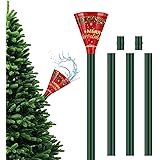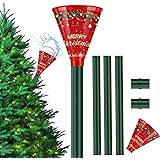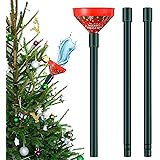Welcome to the fascinating world of houseplants! Ever wondered about the history of these green companions that effortlessly brighten up our indoor spaces? Well, you’ve come to the right place! In this article, we will delve into the captivating history of houseplants, tracing their origins and impact on our lives.
From their humble beginnings as decorative elements in ancient civilizations to their modern-day popularity as essential decor and air purifiers, the history of houseplants is a tale of nature’s beauty thriving within the confines of our homes. So, let’s embark on this journey and explore the captivating history of houseplants together!
History of Houseplants
Houseplants have become an integral part of our lives, adding beauty and a touch of nature to our indoor spaces. But have you ever wondered about the history behind these beloved plants that have found a place in our homes?
From ancient civilizations to modern times, the journey of houseplants is a fascinating tale that spans centuries. Let’s delve into the rich history of houseplants and explore how they have evolved over time.
1. The Origins of Houseplants
Houseplants, as we know them today, have a humble beginning rooted in the ancient world. People have been bringing plants indoors for thousands of years, driven by both practical and aesthetic purposes. Here’s a glimpse into the early days of houseplants:
Ancient Egypt: Greenery in Divine Worship
In Ancient Egypt, houseplants played a crucial role in religious and spiritual practices. The Egyptians worshiped many gods associated with nature, and their homes often featured indoor gardens with plants such as papyrus, palm trees, and lotus flowers.
These plants were seen as sacred and were believed to bring blessings and prosperity.
Ancient Rome: Green Spaces in Urban Dwellings
The Romans, known for their architectural marvels, also embraced the concept of indoor gardens. Wealthy Romans created elaborate courtyard gardens known as peristyles, which featured fountains, statues, and a variety of plants.
These green spaces provided a respite from the bustling city and showcased the Romans’ appreciation for nature.
Read More: About Exploring The Fascinating Corn Plant Stalk With No Leaves
Medieval Europe: Herbal Gardens for Medicinal Purposes
During the Middle Ages, houseplants took on a practical role as medicinal herbs. Monastic gardens within the cloisters of European monasteries were home to a wide range of plants, including rosemary, lavender, and mint.
These plants were cultivated for their healing properties and were used to treat ailments and illnesses.
2. Victorian Era: A Golden Age for Houseplants
The Victorian era marked a significant turning point in the history of houseplants, as it witnessed the rise of botany as a popular hobby and the development of innovative cultivation techniques.
Houseplants became a symbol of wealth, status, and sophistication during this time. Here’s a closer look at this pivotal period:
Palm House Mania
In the early 19th century, advancements in glasshouse technology resulted in the construction of large-scale conservatories, known as palm houses. These architectural marvels allowed for the cultivation of exotic plants, particularly palms, which quickly became a status symbol among the Victorian elite.
The Royal Botanic Gardens at Kew in London became renowned for its impressive palm house, inspiring similar structures around the world.
Terrariums and Wardian Cases
Another popular trend during the Victorian era was the use of terrariums and Wardian cases. These glass containers provided a controlled environment for delicate plants to thrive indoors.
The invention of the Wardian case, named after Dr. Nathaniel Bagshaw Ward, revolutionized the transportation of plants, enabling the long-distance travel of exotic species and expanding the variety of houseplants available.
The Language of Flowers
Victorians had a deep fascination with flowers and assigned meaning to different blooms, creating a language of flowers. This symbolic language allowed people to communicate their feelings and sentiments through the gift of flowers.
Houseplants like African violets, orchids, and ferns became popular choices for expressing emotions such as love, admiration, and friendship.
3. Modern Era: Houseplants for Health and Wellness
In the 20th and 21st centuries, houseplants have evolved beyond mere decorative elements. They have become essential components of interior design, contributing to our well-being in various ways. Let’s explore the contemporary role of houseplants:
The Green Revolution
The environmental movement of the late 1960s and early 1970s sparked a renewed interest in houseplants. As people became more conscious of the impact of pollution and deforestation, they turned to indoor plants as a way to reintroduce nature into their lives.
This led to a surge in the popularity of plants like spider plants, peace lilies, and snake plants, known for their air-purifying qualities.
Biophilic Design: Connecting with Nature
Biophilic design, a concept that emphasizes incorporating natural elements into built environments, has gained traction in recent years. Houseplants are a key component of this design philosophy, as they create a connection between humans and nature, promoting well-being, productivity, and stress reduction.
Workspaces, hospitals, and homes now embrace the inclusion of houseplants to create healthier and more harmonious living and working environments.
Social Media and the Plant Parenting Trend
The advent of social media platforms like Instagram has fueled the rise of the plant parenting trend. Millennials and Gen Z have embraced houseplants as companions, sharing their plant care journeys online.
The #plantsofinstagram and #urbanjungle hashtags have created vibrant communities of plant lovers. This digital age has made it easier than ever to exchange knowledge, seek advice, and showcase the beauty of houseplants.
In conclusion, the history of houseplants takes us on a journey through time, revealing how these botanical wonders have captivated humans throughout history. From ancient civilizations to modern times, houseplants have provided us with beauty, solace, and a connection to the natural world.
As we continue to appreciate the benefits of houseplants, their story continues to evolve, intertwining with our own narratives and enriching our lives. So, why not bring a piece of this captivating history into your own home by adopting a houseplant or two?
Read More: About Troubleshooting Jasmine Plant Leaves Curling: Causes & Solutions
Frequently Asked Questions (FAQs)
Houseplants have a rich history that extends back thousands of years. Understanding their significance helps us appreciate their cultural, aesthetic, and environmental contributions.
In ancient civilizations, houseplants were primarily used for medicinal purposes, religious ceremonies, and decorative purposes. They were valued for their healing properties, as offerings to gods, and to enhance indoor environments.
Houseplants gained popularity as ornamental plants during the Victorian era in the 19th century. This period saw a surge in indoor gardening and the cultivation of exotic plants, reflecting the wealth and status of the homeowners.
Houseplants played a crucial role in the exploration and colonization of new lands. They were brought on ships to provide fresh food, combat scurvy, and create familiar environments during long voyages. They also served as symbols of prestige and helped establish botanical gardens.
The invention of the terrarium in the mid-19th century revolutionized the cultivation of houseplants. This enclosed glass container created a miniaturized greenhouse environment, allowing people to grow plants indoors with ease and precision.
The modernist movement in the early 20th century embraced minimalism and simplicity, leading to a decline in the popularity of houseplants.
Many architects and designers favored clean, uncluttered interiors that did not prioritize the inclusion of plants.
In recent years, houseplants have experienced a resurgence in popularity due to various factors. The rise of social media and interior design trends showcasing plant-filled spaces, along with their proven benefits for air purification and mental well-being, have contributed to their renewed appeal.
Several houseplants have become iconic due to their enduring popularity and adaptability. Examples include the spider plant (Chlorophytum comosum), snake plant (Sansevieria trifasciata), and pothos (Epipremnum aureum).
These plants are known for their resilience and ability to thrive in different environments.
Incorporating houseplants into your home is a great way to enhance aesthetics and create a healthier indoor environment. Start by considering the lighting conditions and humidity levels in each room.
Research different species that suit those conditions and experiment with their placement to find the perfect balance of form and function.
Final Thoughts
Houseplants have a long and fascinating history. From ancient civilizations to modern homes, these green companions have been cherished for their beauty and benefits. The history of houseplants can be traced back to the Hanging Gardens of Babylon, one of the Seven Wonders of the Ancient World. Throughout the ages, different cultures have valued houseplants for their aesthetic appeal and symbolic meanings.
Today, houseplants continue to be popular, bringing nature indoors and adding a touch of tranquility to our living spaces. The history of houseplants is a testament to our deep connection with nature and the enduring appeal of these botanical treasures.
Auto Amazon Links: No products found.
Perfect Plants Christmas Tree Saver 8oz. | Easy Use Xmas Tree Preserver Food | Have Healthy Green Christmas Trees All Holiday Season
$9.97 (as of December 3, 2025 00:36 GMT +00:00 - More info- Product prices and availability are accurate as of the date/time indicated and are subject to change. Any price and availability information displayed on [relevant Amazon Site(s), as applicable] at the time of purchase will apply to the purchase of this product.
Kaiedos Christmas Tree Watering Funnel - 39 Inch Funnel, Reusable Design, Makes Watering Your Live Tree a Snap!
$14.99 (as of December 3, 2025 00:36 GMT +00:00 - More info- Product prices and availability are accurate as of the date/time indicated and are subject to change. Any price and availability information displayed on [relevant Amazon Site(s), as applicable] at the time of purchase will apply to the purchase of this product.
Christmas Tree Watering Funnel, Real Christmas Tree Water Long Funnel About 40 Inch, Trees Watering System for Water Indoor Outdoor
$15.99 (as of December 3, 2025 00:36 GMT +00:00 - More info- Product prices and availability are accurate as of the date/time indicated and are subject to change. Any price and availability information displayed on [relevant Amazon Site(s), as applicable] at the time of purchase will apply to the purchase of this product.
IPOOLTENG Christmas Tree Watering Funnel 3 Tube 1 Funnels 40 Inch - 3 Section Plastic Christmas Tree Funnel Waterer, Long Funnels for Watering Trees, Best Gifts for Your Parents to Water Tree
$15.53 (as of December 3, 2025 00:36 GMT +00:00 - More info- Product prices and availability are accurate as of the date/time indicated and are subject to change. Any price and availability information displayed on [relevant Amazon Site(s), as applicable] at the time of purchase will apply to the purchase of this product.
1 Pack Christmas Tree Watering Funnel System, 44 Inch Christmas Tree Watering Stick with Adjustable 3-Section Design, Reusable & Spill-Free, Xmas Plant Waterer Tool for Indoor and Outdoor
$16.99 (as of December 3, 2025 00:36 GMT +00:00 - More info- Product prices and availability are accurate as of the date/time indicated and are subject to change. Any price and availability information displayed on [relevant Amazon Site(s), as applicable] at the time of purchase will apply to the purchase of this product.
Cuisinart 6.5" Cast Iron Smashed Burger Press, Round Flat Edge Grill Press for Crispy Smash Burgers, Burger Tool for Grill and Griddle Accessories, for BBQs and Tailgates
$24.99 (as of December 4, 2025 16:51 GMT +00:00 - More info- Product prices and availability are accurate as of the date/time indicated and are subject to change. Any price and availability information displayed on [relevant Amazon Site(s), as applicable] at the time of purchase will apply to the purchase of this product.
Snow Joe Premium Enviro Blend Ice Melt, Green-Coated Deicer Crystals, 50 lb - Safer Melter for Vegetation, Concrete & Metals w/ Anti-Corrosion Calcium Magnesium Acetate
$32.97 (as of December 4, 2025 16:51 GMT +00:00 - More info- Product prices and availability are accurate as of the date/time indicated and are subject to change. Any price and availability information displayed on [relevant Amazon Site(s), as applicable] at the time of purchase will apply to the purchase of this product.
Muddy Mat® Shown on TV Super Absorbent Microfiber Dog Door Mat for Muddy Paws, Non-Slip Washable Pet Rug, Quick Dry Chenille Entryway Carpet, Machine Washable Indoor Outdoor mat, Grey 30"x19"
$19.95 (as of December 4, 2025 16:51 GMT +00:00 - More info- Product prices and availability are accurate as of the date/time indicated and are subject to change. Any price and availability information displayed on [relevant Amazon Site(s), as applicable] at the time of purchase will apply to the purchase of this product.
OLANLY Dog Door Mat for Muddy Paws 30x20, Absorbs Moisture and Dirt, Absorbent Non-Slip Washable Doormat, Quick Dry Chenille Mud Mat for Dogs, Entry Indoor Entryway Carpet for Inside Floor, Grey
$9.99 (as of December 4, 2025 16:51 GMT +00:00 - More info- Product prices and availability are accurate as of the date/time indicated and are subject to change. Any price and availability information displayed on [relevant Amazon Site(s), as applicable] at the time of purchase will apply to the purchase of this product.
Zevo Flying Insect Trap Official Refill Cartridges - Fits Both Zevo Trap & MAX Indoor Fly Trap - Authentic Trap+Lock Technology to Catch Gnats, House & Fruit Flys (4 Official Refill Cartridges)
$14.97 (as of December 4, 2025 16:51 GMT +00:00 - More info- Product prices and availability are accurate as of the date/time indicated and are subject to change. Any price and availability information displayed on [relevant Amazon Site(s), as applicable] at the time of purchase will apply to the purchase of this product.










